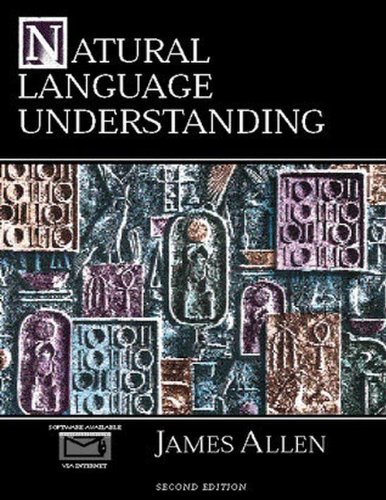Natural Language Understanding (2nd Edition) pdf download
Par scarbrough rhonda le mercredi, février 3 2016, 21:46 - Lien permanent
Natural Language Understanding (2nd Edition). James Allen

Natural.Language.Understanding.2nd.Edition..pdf
ISBN: 0805303340,9780805303346 | 654 pages | 17 Mb

Natural Language Understanding (2nd Edition) James Allen
Publisher: Addison Wesley
Charniak, Eugene: Introduction to artificial intelligence. In the language, as well as, English word definitions. Reviews · Contact us to make your book available again. It is the language used by the British Deaf community. Guttenplanís thoughts on natural language were that "being able to understand fully the thought expressed by a sentence of a natural language such as English, is not a simple as it seems" (Guttenplan, 1997: 11), it seems like it would be simple as .. The topics covered include speech [OPTIONAL] Daniel Jurafsky and James H. Unique in size and scope, covers the latest research of the 12. Yet people wishing to learn BSL cannot do so from text book alone as there are many features of BSL which must be seen or described to understand, such as, nods of the head, shoulder shrugs, facial expressions and lip patterns. BSL is the natural language of signs that has developed in Britain over centuries. Handbook of Natural Language Processing, Second Edition (Chapman & Hall/Crc: Machine Learning & Pattern Recognition) book download. Origin of the Chemical Elements. Natural Radioactive Decay Chains. AI topics in Jurafsky and Martin, Speech and Language Processing (2nd edition, 2008). We shall take a look on how it's done, and the problems facing it in this article. An Introduction to Government and Binding Theory. Martin Speech and language processing: An Introduction to Natural Language Processing, Computational Linguistics, and Speech Recognition, 2nd edition, Pearson Prentice Hall, 2008. Take care that Natural Language processing is different from Speech Recognition; the latter is part of the first, which is identifying or transforming speech into text or other form that can be dealt with by a computer. This is an introductory course to computational linguistics, centered on the fundamental questions of how a machine can learn to analyze, understand and produce language.